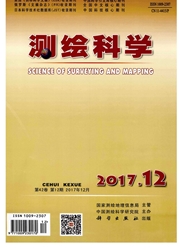

 中文摘要:
中文摘要:
针对利用全球导航卫星系统反射信号研究测站地表环境参数已成为一个新兴的研究课题这一现状,该文基于全球定位系统信噪比与信号振幅的变化特征,给出了基于全球定位系统多路径信号的全球定位系统多径反射技术用于雪深探测的基本原理。为了验证算法的有效性,利用美国PBO网络中P360站离散20d的全球定位系统原始观测数据进行雪深探测的反演实验。实验结果表明:全球定位系统多径反射技术反演雪深值与实测雪深值吻合较好,误差均值为0.07m,相关系数大于0.99。因此,利用全球定位系统信噪比可以进行雪深探测,在未来的全球导航卫星系统观测站建立时,可以考虑它在环境监测方面表现出来的潜能。
 英文摘要:
英文摘要:
In recent years,with constant update and improvement,GNSS systems are used in all walks of life.The GNSS data quality can be affected by the environment around the station.Using SNR to study environmental changes around the station has become a new area of research.Based on the SNR and the signal amplitude variation,the basic principle of GPS-MR technology was given in this paper.GPS data for 20 days in P360 were made to verify the validity of GPS-MR.Retrieval result was consistent with the snow depth recorder.The standard deviation was 0.07 m,and the correlation coefficient was higher than0.99.Therefore,the GPS SNR could be used to detect snow depth.And the potential of GPS-MR in environment monitoring should be considered in building the GNSS station in the future.
 同期刊论文项目
同期刊论文项目
 同项目期刊论文
同项目期刊论文
 Two-dimensional deformation monitoring over Qingxu(China) by integrating C-,L- and X- bands SAR imag
Two-dimensional deformation monitoring over Qingxu(China) by integrating C-,L- and X- bands SAR imag 期刊信息
期刊信息
